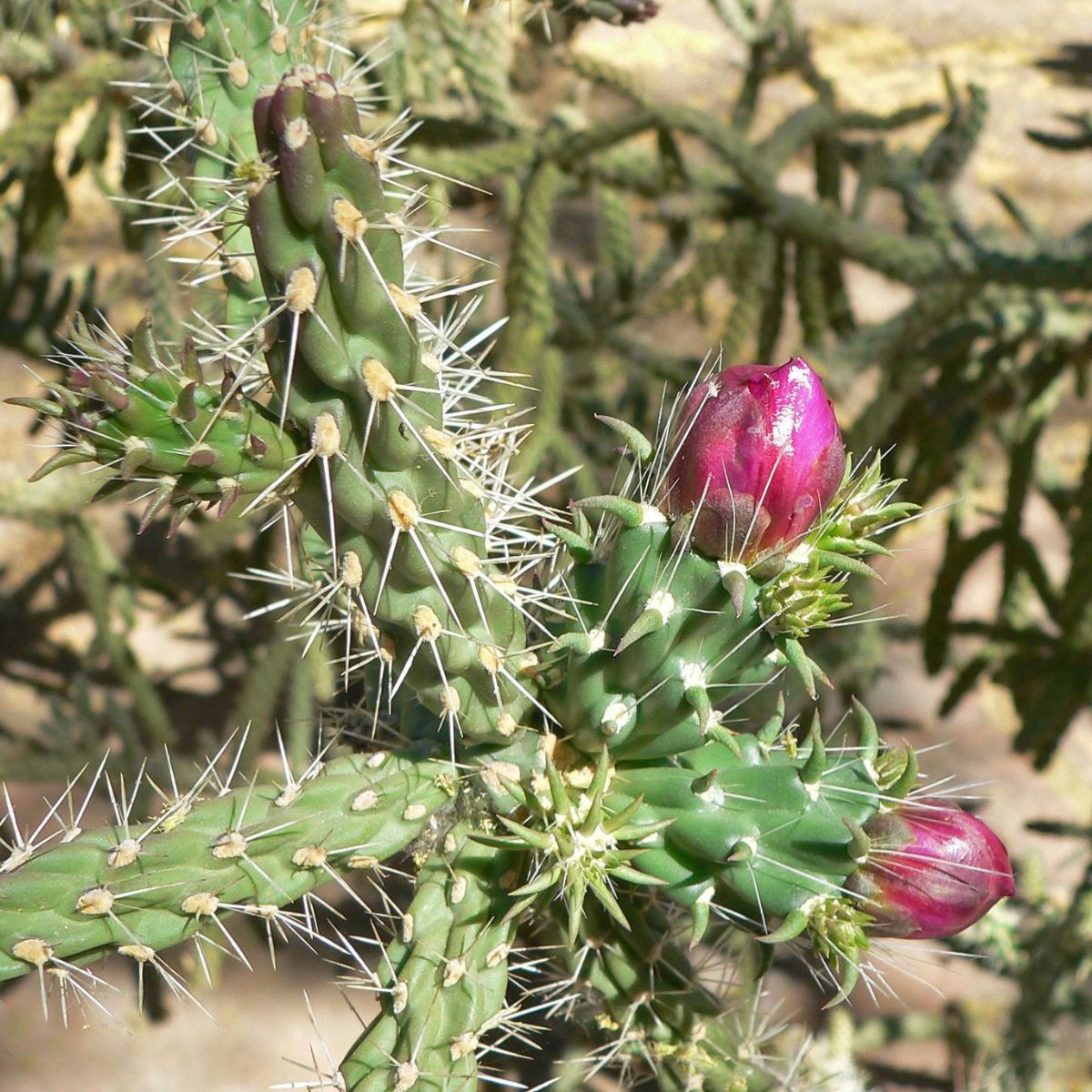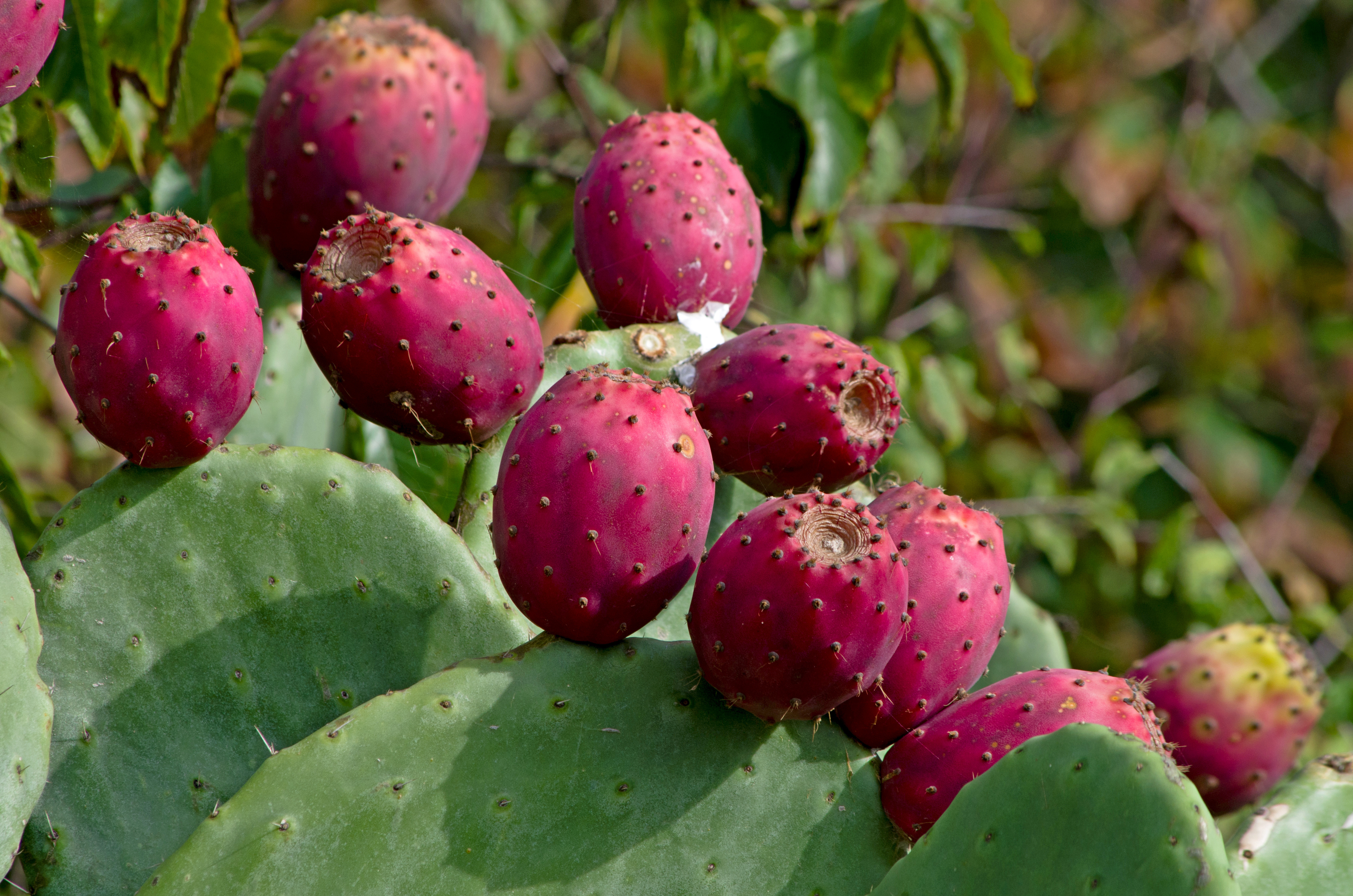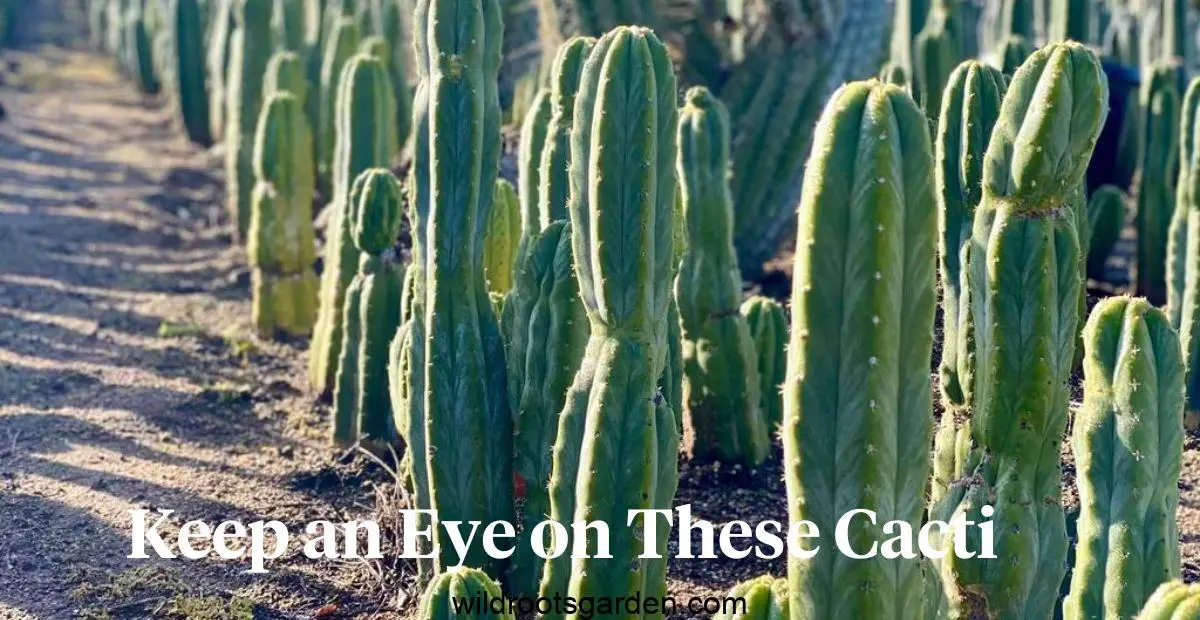Some cacti, such as the peyote, fishhook barrel, and pencil cactus, are not edible. These cacti contain alkaloids that can cause severe vomiting and other gastrointestinal distress.
Cacti are fascinating plants known for their resilience and unique appearance. While some cacti are edible and even offer nutritional benefits, not all varieties are safe for consumption. It’s important to be cautious when considering which cacti to consume, as some can be toxic and even pose serious health risks.
Understanding which cacti are not edible is essential for anyone interested in foraging or consuming these plants. We’ll explore the types of cacti that are not safe for consumption, as well as the potential risks associated with consuming them. By gaining a better understanding of these non-edible cacti, you can ensure your safety and well-being when interacting with these intriguing desert plants.
Introduction To Inedible Cacti
Cacti are renowned for their resilience and unique appearance, but not all cacti are safe for consumption. It’s crucial to distinguish between edible and inedible cacti to avoid potential health risks. Inedible cacti can contain toxic compounds that may cause severe reactions if ingested. Understanding the characteristics and common misconceptions about cactus edibility is essential for ensuring safety when encountering these plants.
Common Misconceptions About Cactus Edibility
There are several misconceptions regarding the edibility of cacti, leading to potential risks for those unaware of the differences between edible and inedible varieties. Some individuals mistakenly assume that all cacti are safe to eat, which can result in dangerous consequences if they consume inedible species. Dispelling these misconceptions is crucial for promoting awareness of the potential dangers associated with consuming certain types of cacti.
Purpose Of Identifying Toxic Varieties
The purpose of identifying toxic cactus varieties is to safeguard against accidental ingestion of inedible species. By recognizing the distinguishing features and toxic components of certain cacti, individuals can make informed decisions and avoid potential harm. This knowledge is vital for ensuring the safety of both humans and animals that may come into contact with cacti in their natural habitats.
Identifying Toxic Cacti
Be cautious when identifying toxic cacti, as consuming the flesh of certain species can lead to vomiting, diarrhea, and temporary paralysis. While the prickly pear and fishhook barrel cacti are exceptions, it’s best to avoid ingesting the Bolivian, peyote, and San Pedro cacti due to their strong alkaloids.
Key Characteristics Of Poisonous Cacti
When it comes to identifying toxic cacti, it’s important to be aware of the key characteristics that can help you distinguish them from edible varieties. While most cacti are harmless, certain species contain harmful substances and should be avoided.
Here are some key characteristics to look out for:
- Spines and thorns: Poisonous cacti often have spines and thorns that are longer, sharper, and more densely packed compared to edible cacti. These spines and thorns act as a defense mechanism, deterring animals and humans from consuming them.
- Unusual colors or patterns: Some toxic cacti may display unusual colors or patterns on their stems or flowers. These vibrant colors can serve as a warning sign of their toxicity.
- Unpleasant odor: Certain poisonous cacti emit a strong, unpleasant odor. If you come across a cactus with a foul smell, it’s best to avoid consuming it.
- Unusual growth habits: Toxic cacti may exhibit abnormal growth patterns, such as unusually large or deformed stems. These irregularities can indicate the presence of harmful compounds.
The Role Of Alkaloids In Cactus Toxicity
Alkaloids are naturally occurring chemical compounds that can be found in various plant species, including certain cacti. These compounds play a significant role in cactus toxicity and can have harmful effects on human health.
Here’s how alkaloids contribute to cactus toxicity:
- Vomiting and gastrointestinal distress: Some alkaloids found in toxic cacti can irritate the digestive system, leading to severe vomiting, diarrhea, and other gastrointestinal issues.
- Neurological effects: Certain alkaloids can affect the central nervous system, causing hallucinations, confusion, and even temporary paralysis in some cases.
- Organ damage: Prolonged consumption of alkaloid-containing cacti can lead to organ damage, particularly to the liver and kidneys.
It’s important to note that not all cacti contain alkaloids or pose a threat to human health. However, it’s essential to be cautious and avoid consuming any cactus unless you are certain it is safe and edible.
Popular But Poisonous
Not all cacti are edible, and some species can be poisonous if consumed. While prickly pear and fishhook barrel cactus are safe to eat, other varieties, such as Bolivian, peyote, and San Pedro cacti, can cause severe vomiting, hallucinations, and gastrointestinal distress.
It’s important to know which cacti are safe to consume before attempting to eat them.
Peyote: The Psychoactive Cactus
Peyote, a psychoactive cactus, contains mescaline, a potent hallucinogen.
San Pedro And Its Hallucinogenic Properties
San Pedro cactus is known for its hallucinogenic effects due to the presence of mescaline.
Lesser-known Dangers
Beware of the dangers of consuming inedible cactus species as they can lead to severe reactions like vomiting and paralysis. While prickly pear and fishhook barrel cactus are safe, avoid consuming varieties like peyote and pencil cactus due to their toxic nature.
Stay informed and safe when it comes to cactus consumption.
The Bolivian Torch Cactus
The Bolivian Torch Cactus, also known as Echinopsis lageniformis, is a cactus species that is often used for its psychoactive effects. However, consuming this cactus can be incredibly dangerous as it contains high levels of mescaline, a hallucinogenic compound that can cause severe vomiting, anxiety, and even death. It is important to note that it is illegal to consume this cactus in many countries.
Cholla Cactus: Not As Harmless As It Looks
The Cholla Cactus is a commonly found cactus species in North America. While it may look harmless, its spines can be incredibly sharp and difficult to remove once embedded in the skin. In addition, the spines are known to cause severe allergic reactions in some individuals. It is important to avoid contact with this cactus and to seek medical attention immediately if you are punctured by its spines.
Other cactus species, such as the San Pedro and Peyote cacti, contain psychoactive compounds that can be dangerous if consumed in large quantities. It is important to exercise caution when consuming any cactus species and to only consume those that have been identified as safe for consumption. Remember, just because a cactus is not edible does not mean it is not dangerous.
Euphorbia: The Deceptive ‘cactus’
While often mistaken for a cactus due to its similar appearance, Euphorbia is not a true cactus. Euphorbia belongs to a different plant family known as Euphorbiaceae. Despite its misleading resemblance, Euphorbia has distinct characteristics that set it apart from genuine cacti.
Why Euphorbia Is Mistaken For Cactus
Euphorbia is often mistaken for a cactus due to its succulent nature and spiky, thorn-like protrusions, which closely resemble those found on cacti. Additionally, Euphorbia’s adaptation to arid environments and its ability to store water within its fleshy stems further contribute to the confusion between the two plant types.
The Dangers Of Euphorbia Sap
One of the most significant distinctions between Euphorbia and true cacti is the toxic nature of Euphorbia sap. The milky white sap produced by Euphorbia contains toxic compounds, such as diterpenes and phorbol esters, which can cause severe skin irritation and, if ingested, lead to symptoms ranging from nausea and vomiting to more serious health issues. This potent sap sets Euphorbia apart from edible cacti and emphasizes the importance of proper plant identification.
Credit: en.wikipedia.org
Survival Myths Debunked
When it comes to survival myths, one common misconception is that all cacti are edible. However, not all cacti are safe for consumption in emergencies. Let’s explore the truth behind hydrating from cacti and the risks involved in emergency cactus consumption.
The Truth About Hydrating From Cacti
While some sources suggest that cacti can provide hydration in the desert, it’s important to note that not all cacti are safe to drink from. Only a few cactus species, such as the prickly pear and the fishhook barrel cactus, offer water that is safe for consumption.
Risks Involved In Emergency Cactus Consumption
If you consume the wrong type of cactus, you may experience severe vomiting, hallucinations, and other gastrointestinal issues. Cacti such as the Bolivian, peyote, and San Pedro cacti contain alkaloids that can be harmful when ingested.
Remember, not all cacti are edible, and some species can be toxic or even fatal if consumed. It’s essential to have accurate knowledge of which cacti are safe for consumption in survival situations to avoid putting yourself at risk.
Safe Cactus Consumption
Cactus consumption can be safe, but it’s important to know which cacti are not edible. Some cactus species, such as the Bolivian, peyote, and San Pedro cacti, contain alkaloids that can cause severe vomiting and hallucinations. It’s best to avoid consuming these types of cacti.
Edible Cactus Varieties
Not all cacti are edible, so it’s crucial to know which ones are safe to consume. The two most common edible cactus varieties are the prickly pear and the fishhook barrel. The flesh of these cactus species is safe to eat and is often used in traditional dishes in Mexico and other parts of the world.
Proper Preparation To Avoid Harm
While some cacti are safe to eat, others can cause harm if not prepared properly. It’s essential to remove all spines and glochids, the small hair-like structures found on some cactus species, before cooking or eating. Gloves should be worn during preparation to avoid getting pricked.
Additionally, some cacti contain alkaloids that can cause severe vomiting, hallucinations, and other gastrointestinal distress. These include the Bolivian, peyote, and San Pedro cacti, which should be avoided.
In conclusion, cacti can be a safe and nutritious addition to your diet if you know which varieties are safe to eat and how to prepare them properly. Always exercise caution and do your research before consuming any cactus species.

Credit: thursd.com
Regulatory And Legal Considerations
Certain types of cactus, such as the peyote, San Pedro, and Bolivian cacti, contain alkaloids that can cause severe vomiting and hallucinations if ingested. It’s important to be cautious and avoid consuming these potentially harmful cactus species. Always ensure that the cactus you intend to eat is safe and edible.
Legal Restrictions On Certain Cacti
Not all cacti are created equal, and some are protected by law. The peyote cactus (Lophophora williamsii), for example, is illegal to possess for most U.S. citizens as it contains mescaline, a controlled substance. However, members of the Native American Church are exempt from this law as peyote is used in their religious rituals. Other cacti may also be protected, depending on their conservation status and where they are found. It’s important to do your research and understand any legal restrictions before consuming or harvesting cacti.
Conservation Status And Ethical Harvesting
Cacti are an important part of many ecosystems and some species are threatened or endangered due to habitat loss, over-harvesting, and climate change. It’s important to practice ethical harvesting and only take what you need. Some cactus species, such as the saguaro cactus (Carnegiea gigantea), can take up to 75 years to reach maturity, so it’s important to leave them untouched. Additionally, some cacti are considered sacred by certain cultures and should not be harvested at all. Always be mindful of the conservation status of the cactus species you are dealing with and respect their role in the ecosystem.
In conclusion, regulatory and legal considerations are important when it comes to consuming or harvesting cacti. Some cacti are protected by law, while others are threatened or endangered due to over-harvesting and habitat loss. Always do your research and understand the conservation status of the cactus species you are dealing with, and practice ethical harvesting to ensure their sustainability for future generations.
Learning From Indigenous Knowledge
Traditional Uses Of Cacti
Cacti have been utilized for centuries by indigenous communities for various purposes.
- Food source
- Medicinal properties
- Construction materials
Indigenous Insight On Cactus Edibility
Indigenous knowledge highlights that not all cacti are safe for consumption.
- Some cacti can cause severe vomiting and hallucinations.
- Species like Bolivian, peyote, and San Pedro cacti are not edible.

Credit: completelandscaping.com
Frequently Asked Questions
Are Any Cactus Poisonous To Eat?
Yes, some cactus species are poisonous to eat. The flesh of certain cacti can cause vomiting, diarrhea, or temporary paralysis. However, the prickly pear and fishhook barrel cactus are exceptions and can be safely consumed. It’s important to exercise caution and avoid consuming cacti unless you are certain they are edible.
How Do You Know If A Cactus Is Edible?
To determine if a cactus is edible, research specific species and consult with experts for accurate information.
Are All Nopales Edible?
Yes, the nopal pads are edible, and they can be eaten raw or cooked. They are used in various dishes and traditional medicine. The pads from almost all Opuntia species are edible.
What Cactus Is Illegal?
The peyote cactus (Lophophora williamsii) is illegal due to its mescaline content. Possession of peyote and its alkaloid is illegal for all US citizens, except for members of the Native American Church who use it in their rituals.
Final thought
It’s crucial to know which cacti are not edible to avoid potential harm. Remember, some cacti can cause severe reactions if ingested. Stay safe and informed when it comes to consuming cactus plants. Always prioritize your health and well-being.

